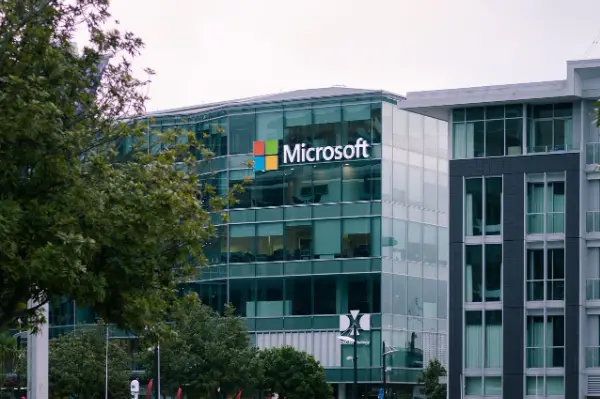Microsoft has been on quite the journey over the last few years. Once seen as lagging behind competitors like Apple and Google, CEO Satya Nadella's stewardship has returned Microsoft to the top, both in terms of the relevance of its products and its market cap. Indeed, Nadella deserves a lot of credit: it was no coincidence that Microsoft wasn’t included in the famous FAANG acronym coined by Jim Cramer in 2013. Microsoft was still a large cap, but it wasn’t exactly a darling among investors. In fact, its stock barely grew at all from the late 1990s up until Nadella’s investiture in 2014. Today, its stock is worth around ten times as much as it was when Nadella took over. And, as has been widely reported recently, Microsoft’s market cap has exceeded $3 trillion, allowing it to overtake Apple as the world’s most valuable company.
Yet, the point of this is not to praise Nadella, deserving though that might be. Rather, it is to consider if there is a ceiling for Microsoft’s stock and, if so, what traders and investors can do about it.

Why is Microsoft Stock Soaring?
Nvidia was the clear winner among large caps in 2023, but Microsoft was not far behind, and it has continued that run into 2024. One of the main reasons behind it is the partnership with OpenAI (creator of ChatGPT). Microsoft reportedly owns 49% of OpenAI. Microsoft stands to gain considerably if – and when – we see mass adoption of OpenAI products. It has also allowed Microsoft to refresh its own products, such as Bing, with AI capabilities. AI is not the only driver of Microsoft’s success, and investors will also have been buoyed by the resolution of the huge takeover of Activision Blizzard, which could give Xbox a lead in the growing global gaming industry.
How Much Further Can It Go in the Short to Medium Term?
In January 2024, Microsoft became the second company to reach a $3 trillion market cap. Apple had previously achieved the feat twice before falling back again. You don’t need to use a trading calculator to work out that it is unlikely that Microsoft is going to do multiples from here. To put that $3 trillion MC in perspective, consider it is around the same figure as the entire annual GDP of France. The point, as such, is that someone investing $1000 in Microsoft stock today is not going to be able to sell that for $10,000 in the coming years, at least not in the short or medium term. Yes, we should never say never in financial markets, but these vast sums make it a remote possibility. Consider that for Microsoft to double its market cap, it would need to add the value of Amazon and Alphabet combined. That’s not to say it doesn’t have further to run in the short term.
What About the Long Term?
This is a more interesting question. As we mentioned earlier, Microsoft’s star has been in the ascendency thanks in large part to its relationship with OpenAI. There are two opposing views here: The first is that OpenAI was founded as a not-for-profit, later transitioning to “capped for profit”. The point is that it is not designed to be a profit-making machine. On the other hand, the potential for cash generation by OpenAI could dwarf anything created by traditional Big Tech models. The advent of the GPT Store, essentially an app store for AI, could unleash millions of microservices into a new economy. It could be more revolutionary than the iPhone, even the internet. If Microsoft has a slice of that pie, then why not set ambitious targets for its stock?
We Should Not Forget the Macro Environment
Stocks have, by and large, been on a tear since the second half of 2023 into early 2024. Indeed, we should also add that Microsoft’s success is also down to an appetite from investors to pour money into large caps on the S&P 500 in recent months. Yet, we have other issues at hand that may take the wind out of Microsoft’s sails, including a growing debt crisis, concerns over war in the Middle East, a hotly contested US presidential election (it is something of a myth that stocks do well in election years), and many more potential economic headwinds. As such, there may be trouble ahead for stocks in general, which would also weigh down on Microsoft. Nobody is saying that trouble is definitely on the horizon, but investors would do well to recognize that there are potential storm clouds on the horizon.

Investors Should Keep a Level Head
Back in July 2023, Forbes Investment Hub produced a report on whether Microsoft stock could reach $500 (about 25% higher than it is today). The article was largely dismissive of that target, claiming it was out of reach. But it’s worth noting that Microsoft was trading at $335 on the date of publication, meaning it has risen 20% since then. The point, as such, is that Microsoft is probably no longer a “moonshot” buy; its market cap is too big to double or triple in a short period of time. But with the AI boom, as well as other lucrative income streams such as its cloud services, it can keep growing.

